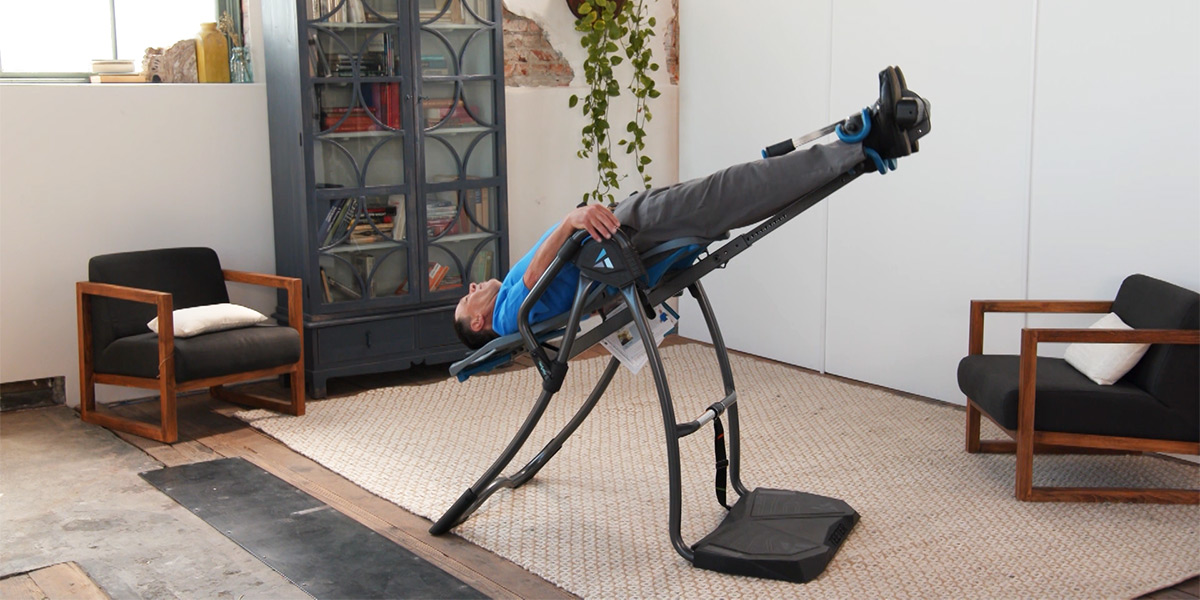What angle of inverted decompression offers the best stretch?
When researching inversion tables, you will likely find differing information on proper inversion therapy methods and the best angle to use on an inversion table.
The simple answer is whatever angle is most comfortable for you.
It may take time for your body to adjust to the feeling of being upside down and for your muscles to be able to relax while inverted. Listen to your body and only invert to an angle at which you can fully relax.
Eventually, we recommend working your way up to an angle of 60 degrees (which is parallel with the rear legs of the frame). That’s what we call the “magic angle” because – according to a study (more details below) – that is the angle at which the pressure in your discs is at or near zero and you can fully decompress.
Comparing Inversion Table Options
Perhaps one of the most confusing choices is the difference between inversion tables which offer a full range of inversion angles up to 90 degrees (like Teeter),
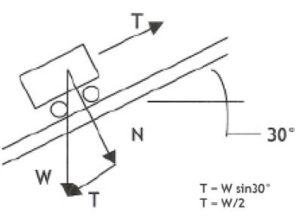
Dynamark Engineering uses a free body diagram to calculate the force on the body at a 30-degree incline.
versus those that limit the rotation angle to partial inversion up to 30 degrees.
The ‘partial inversion’ model with a sliding backrest design (like the MasterCare Inversion Table) claims that inversion to just 15 degrees is enough to decompress the spine.
The theory is that the movement of the bed transforms body weight into added traction. But does that theory hold water?
Teeter commissioned an engineering group to compare traction forces between this sliding backrest design and Teeter Inversion Tables. Their independent report indicated that the sliding backrest does offer additional traction force to the spine, but only if the user’s buttocks are elevated off the surface of the table.
If the user was able to engage the sliding backrest in this manner, which per the report is only possible under “highly idealized conditions”, the user is only able to add 3% more bodyweight force. This percentage is far less than what is achievable by inverting to 60-90 degrees.
Also, the user would be forced to constrict their back muscles to arch the back, possibly negating some therapeutic effect of the relaxed spine under decompression.
The report indicated that the rolling backrest model can vary the load on the lower spine from zero to 50% of the user’s upper body weight. In contrast, the user of a Teeter Inversion Table that offers full inversion can vary the load from zero to 100% of the user’s upper body weight.
What is the Science Behind the Best Angle to Use on an Inversion Table?
To understand the impact of the inverted body position on the pressure in the spine, we look to two ground-breaking studies: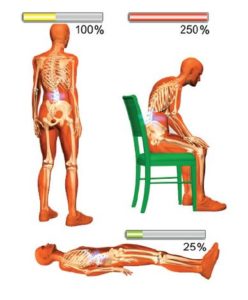
Nachemson Study: Alf Nachemson had a profound impact on understanding how posture plays an important role in preventing back pain and why simply lying down won’t ease the pain.
Why was his study so groundbreaking? He surgically implanted a pressure sensor into patients’ 3rd lumbar disc and measured the pressure inside the disc through various body positions.
A baseline of 100% was set for the standing body position. Not surprisingly, sitting slumped forward increased the pressure to 250%! Even lying down, 25% of standing pressure remained, caused by the residual pressure of the muscles and ligaments that support the spine.
The study confirmed that gravity-assisted traction significantly reduces pressure on the discs in direct proportion to the traction force. In other words, the greater the angle of inversion, the greater the disc decompression. It showed that an inverted angle of approximately 60 degrees was necessary to bring the pressure inside the discs to at or near zero – or ‘full decompression.’
Newcastle Study: In more recent years, another study showed dramatic results for patients who used a Teeter to 60 degrees or more.
Surgeons from Newcastle University evaluated potential surgery patients suffering from sciatica caused by a herniated disc. Both groups received traditional PT, but one also inverted to 60 degrees or more on a Teeter Inversion Table.
The preliminary study data indicated that the use of inversion to 60-90 degrees reduced the patients’ need for surgery by 70.5%!
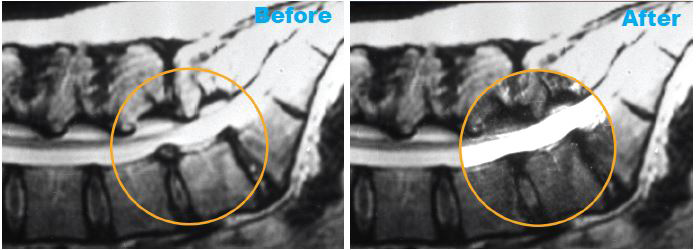
MRI images from a patient in the inversion group who experienced dramatic reduction of their herniated disc
Why Inversion to a 60 Degree Angle Is Important
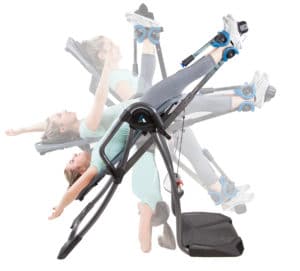
The variable angles offered by Teeter inversion tables allow the user to easily start at a mild angle of 20-30 degrees while they acclimate to inversion, then gradually increase the angle over time in order to reach 60 degrees.
At the 60-degree angle, the loads on the discs are reduced to at or near zero, relieving pressure on the discs to allow rehydration and the intake of vital nutrients to heal the discs. Nearly half of all Teeter users end up going to full inversion, which allows for a greater range of motion (important for gaining flexibility and mobility of the spine and weight-bearing joints) and options for advanced stretching and exercise.
In conclusion, there is no “best” angle to use on an inversion table, but numerous studies show that choosing a table with the ability to invert to 60 degrees will provide more decompression and pain-relieving benefits. With the ability to easily control the angle and rate of rotation with simple arm movements, limit the degree of rotation by using the angle tether, and accessorize the Teeter to customize the user experience, Teeter Inversion Tables offer the most versatile and user-friendly options on the market.
Get Real Back Pain Relief
Join over 3 million people who have found real back pain relief with Teeter.
Contraindications
Like any new treatment program, consult with your doctor before you invert. It’s important to discuss your personal needs with your physician, especially if you have or experience any of the contraindications.
Sources
- Nachemson, A and Elfstrom, G; Intravital Dynamic Pressure Measurements in Lumbar Discs. Scandinavian Journal of Rehab Medicine, supplement, 1970.
- Inversion therapy in patients with pure single level discogenic disease: a pilot randomized trial. Regional Neurosciences Centre, Newcastle General Hospital
